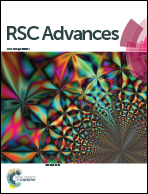Experimental evidence for presence of voids in phase change memory material
Abstract
We report, for the first time, experimental evidence for the nature of atomic defects with different sizes in glass and crystalline phase of Ge–Te alloys using positron lifetime spectroscopy. The obtained positron lifetime results have been correlated with the size of the open volume (cavities) defects. We provide direct support for the ubiquitous voids which are found to be significantly larger in eutectic than the other compositions, where they include 25% of the total volume. Contrary to natural belief, here we found that the crystalline state possesses a larger defect concentration than the corresponding glassy state. We have ascribed the origin of this paradoxical behaviour to larger electronic polarizability in the crystalline state which leads to easy formation of defects and thereby, a more disordered structure. On the other hand, formation of a chemically more ordered and rigid covalent network structure in the amorphous phase leads to smaller defect concentration. The present results demonstrate that both, the size of cavity and the concentration of defects play an important role in the fast reversible phase transition process.


 Please wait while we load your content...
Please wait while we load your content...